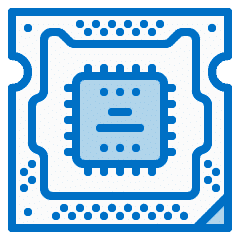OUR PCI DSS COMPLIANCE SERVICES
What is PCi-DSS Compliance?
PCI DSS (Payment Card Industry Data Security Standard) is a set of technical and organizational requirements designed to help businesses protect their customers’ credit card data against fraud through robust payment security measures. In other words, PCI-DSS is enforced by the founding members of the PCI Council: American Express, Therefore, discover Financial Services, JCB, MasterCard, and Visa Inc.
In other words, to ensure the security of card data, one of PCI’s key security controls requires organizations to perform a yearly security assessment of their card-handling systems, to fix any technical vulnerability that could potentially compromise card payments or their processing.
Our penetration testing services are designed to facilitate compliance with the PCI DSS penetration testing requirements.
Prevent costly fines
Protect credit card data
Protect card-processing systems
Secure partnerships
Establish customer trust
Improve your cybersecurity
PCI-DSS REQUIREMENTS
What is the Scope of a PCI-DSS Penetration Test?
Most importantly, PCI-DSS requirements mandate to clarify that organizations test the security of any systems as long as involved with card processing.
Certainly, this is particularly why the testing scope to achieve PCI compliance may vary from one organization to another, consequently, depending on the extent of their cardholder data environment (CDE).

Internal
Servers

External
Networks
Websites,
Applications or APIs

Wireless
Networks

Card Payment
Machines

Cloud
Infrastructure
PCI-DSS Penetration Testing Requirements
For instance, our services have helped hundreds of organizations comply with the PCI-DSS during, subsequently, yearly pentesting requirements:
PCI DSS Requirement 6.1
Consequently, establish a process analogous to identifying security vulnerabilities to get a secure network. Likewise, in your internal and external applications, that is to say, by using reputable outside sources for security vulnerability information security, after that, assign a risk ranking (for example, as ‘high,’ ‘medium,’ or ‘low’) to newly discovered security vulnerabilities.
PCI DSS Requirement 6.2
Firstly, ensure that all software and system components are protected from known vulnerabilities, consequently, by installing the applicable security patches provided by the supplier. Above all, you must install the patches within the first month following their release.
PCI DSS Requirement 11.3.1
Also perform external penetration tests at least once a year and after all significant changes or upgrades to the infrastructure / application (for example, additionally upgrading the system, adding a subnet or web server to the environment, etc.).
PCI DSS Requirement 11.3.2
Accordingly perform internal penetration tests at least once a year and after any change or accordingly upgrade significant infrastructure or the application (for example, consequently upgrade of the operating system or adding a subnet or web server in the environment).
PCI DSS Requirement 11.3.3
PCI DSS Requirement 11.3.4
If segmentation is used to isolate the CDE from another secure network, then penetration tests must be performed less than once a year and following modification of the methods/controls of segmentation to verify that the segmentation methods are operational and effective.
Need to Comply With PCI-DSS?
Frequently Asked Questions
How does Vumetric help me meet the PCI-DSS requirements?
Our services are specially designed to ensure that you meet the PCI-DSS requirements information security efficiently, without any guessing games.
We will provide evidence, through a technical report and an official attestation, that you have identified and successfully fixed any exploitable vulnerabilities within card processing systems and your external infrastructure
Thus, allowing your organization to comply with the PCI-DSS 6.x and 11.3.x requirements.
How much does a PCI penetration test cost?
The cost of a PCI penetration test varies significantly according to the scope of your cardholder data environment (CDE).
For this reason, there is no established price range for this type of assessment. To find out how much your penetration test would cost, reach out to our specialists to get a free quote.
What is the difference between an automated PCI scan and a pentest?
Manual penetration tests and fully automated scanners are the most common techniques to identify and fix cybersecurity vulnerabilities within your technologies, therefore, allowing you to meet Requirements 6 and 11.
While scans can be a great starting point for those who lack the resources for manual testing, they may not be sufficient to comply with PCI due to their automated nature.
Only experienced professionals should rely on scans to become PCI compliant, as these tools may fail to identify every vulnerability that could compromise your CDE, leaving your card-processing systems vulnerable.
Learn more about the main differences between vulnerability assessments and pentests →
Can your tests affect the stability of my payment processing?
Various steps are taken by our specialists to prevent the potential impact of our tests on the stability of your technological environment and the continuity of your business operations.
Unless specifically instructed to, our specialists refrain from performing any disruptive types of attacks that can, for example, cause denial of service.
Thereby, most of our clients are unable to perceive any impact of our tests due to the rigorous measures we deploy to conduct our projects as seamlessly as possible.
Can i store cardholder data once I become PCI-DSS compliant?
According to the PCI-DSS standards, merchants and providers are permitted to store cardholder data once they become compliant.
Some acquirers may permit sensitive authentication data” information security” to be stored but only prior to payment authorization.
